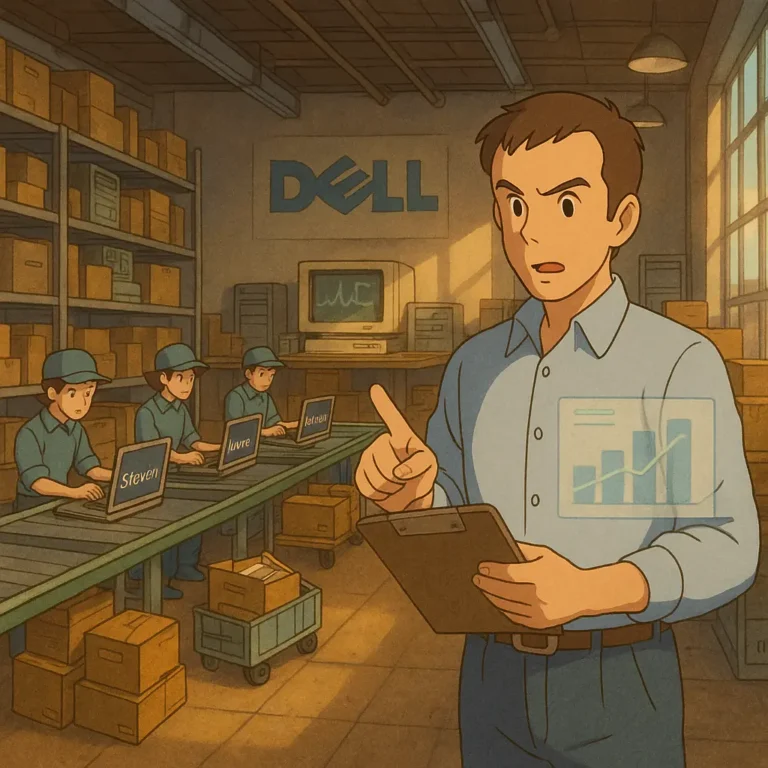
Leveraging technology to improve outcomes is the core goal of the digital supply chain.
Transparency across operations is the craving of every business owner and supply chain manager. It is what dictates success in the modern supply chain management. And a digital supply chain is the one-stop solution to these cravings. It allows for total visibility and control of any operation.
It is no secret that tech is changing the face of supply chain management globally.
Today, organizations can improve their lead times to within hours or days of the customer’s order while eliminating almost all supply chain disruptions. All of that is possible through the digital supply chain.
What are Digital Supply Chains?
A supply chain is the organized and coordinated movement of goods from one point to another.
The average supply chain process is linear in nature and goes all the way down to the end user. I know it sounds simple enough. That is until it is bombarded with disruption after disruption. Now, you are at the risk of disappointing the customers because of a preventable problem.
This is why digital supply chains are so popular.
A digital supply chain is the adoption of technology tools like real-time tracking solutions, artificial intelligence and machine learning, and cloud-based applications to ensure a seamless flow of goods from the business to the consumer. It provides critical information to the supply chain’s stakeholders, allowing them to leverage it to improve their decision-making.
For instance, with a digital supply chain, a business can spot potential delays in real time and immediately identify possible solutions. It gives the supply chain manager real-time production, inventory, orders, and delivery data.
Digital supply chains give stakeholders real-time visibility and control over their supply chain, prompting better services and customer satisfaction while conserving resources.
Digital Supply Chain (DSC) Vs Traditional Supply Chain
Digital and Traditional supply chains have similar objectives: providing consumers with the right goods at the right time.
However, there are a few key differences, such as
| Features | Traditional Supply Chain | Digital Supply Chain |
| Process Flow | Step-by-step, linear | Processes all aspects simultaneously |
| Planning | Reactive | Predictive |
| Visibility | Limited, takes hours/days for overall picture | Real-time data, updates in minutes |
| Management Style | Step-by-step | End-to-end |
| Goal | Provide consumers with the right goods at the right time | Same |
Why Is A Digital Supply Chain Important?
Digital supply chains mean a lot of investment in technology.
But is that really a bad thing, especially considering the nature of the market? And don’t forget that other supply chaisn are competing seriously. More importantly, they are playing to win. Digital supply chains are an effective way to level the playing field. Here we highlight some of the reasons:
Speed
Today, supply chains compete between themselves for speed, and consumers love it.
Lead times and cycle times are more critical than ever in the history of supply chain management. Because of the digital supply chain’s real-time identification of problems and solutions, it can give any business a competitive advantage when trying to gain speed in its supply chain.
Flexibility
The digital supply chain allows stakeholders much flexibility in operating the supply chain activities.
This is especially true, considering they can see the big picture and know potential pitfalls. With this information, stakeholders can tweak the supply chain to enable favourable outcomes.
Accuracy
The digital supply chain’s real-time data allows the business or supply chain leadership to accurately estimate the supply chain’s ability to meet the consumer’s needs.
It can help with incredible performance analysis. With the digital supply chain, tools like forecasting, warehouse management systems, and vendor management software are more efficient and reliant. Increased output from these puts the supply chain in a better competitive position.
Granular
Competition between supply chains has increased the demand for individualized products, inevitably leading to mass customization.
However, customers are satisfied with products that celebrate their culture, ethnicity, gender, and others. Managing all these with the traditional supply chain would be impossible. With the digital supply chain, it is more realistic and achievable.
Efficiency
Through automation and other tech tools, the digital supply chain prevents waste of resources and redundancy.
This helps with streamlining the supply chain and making it run better. Through efficiency, the supply chain reduces mistakes, improves customer experience, and generally cuts down the cost of the supply chain.
How To Create A Digital Supply Chain
Digital supply chains, although quite achievable, can come off as complicated at times. There are a few steps any business should take when trying to implement a digital supply chain successfully.
Identify Issues
When seeking to transform your supply chain digitally, it pays to start with the primary problem.
These could be anywhere from automation of the production or warehouse to tracking of vehicles. Each supply chain operates differently, and identifying the unique problem in any supply chain is the first step in digitizing your supply chain.
Define What You Want
You have identified the issues with your supply chain, but what do you want?
For instance, do you want speed, accuracy, effectiveness, or a combination of all three? Digital supply chains can be several things to different supply chains. Knowing what you want from the digital supply chain will help you plan effectively.
Identify Risk
As much as digital supply chains are great, there are often risks that do come along with them.
For instance: How scalable is it with your business? How compatible is it with your business? Is it a great investment? You can correctly estimate how the digital supply chain impacts your business negatively or positively by answering questions like these.
Create a Road Map
You know what you want, and you know the risk.
Now you create a road map to where you want your digital supply chain to be. A DSC could be partially or fully implemented, but the how and when depends on many factors, such as resources, staff training, and business strategy.
Implement
The final step is to implement digital supply chain strategies.
Gradually do this while training your staff to handle to be able to handle the changes.
Conclusion
There are many reasons why digital supply chains are preferred to traditional ones, but the chief of them is because of the nature of demand and supply in 2024.
With demand and supply changing, businesses must set up their supply chain management to handle these changes, especially in emerging markets.

Obinabo Tochukwu Tabansi is a supply chain digital writer & ghostwriter helping professionals and business owners across Africa explore various strategies that work and learn from the success and failures of various supply chains across the globe. He also ghostwrites social content for logistics & supply chain businesses









1 thought on “Why Digital Supply Chain is Necessary”